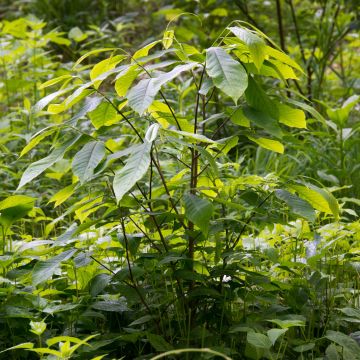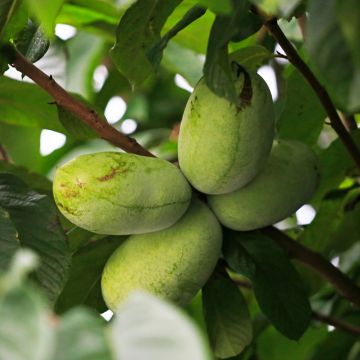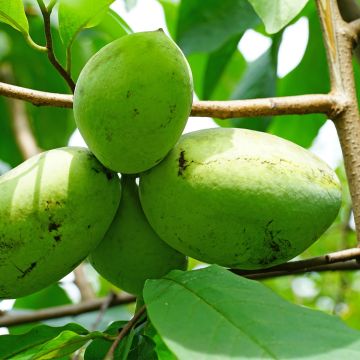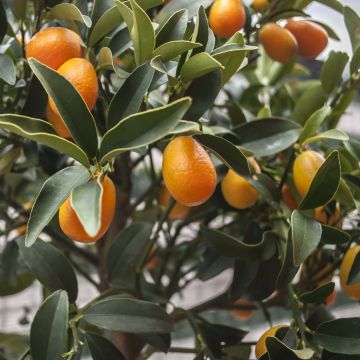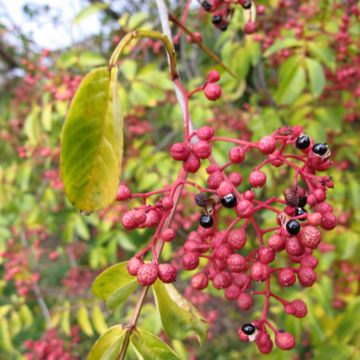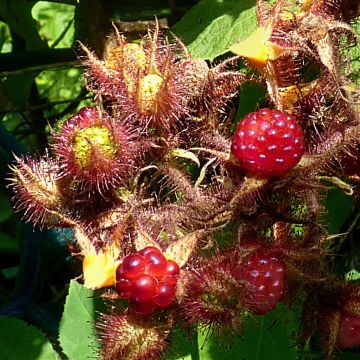

Pawpaw - Asimina triloba Allegheny
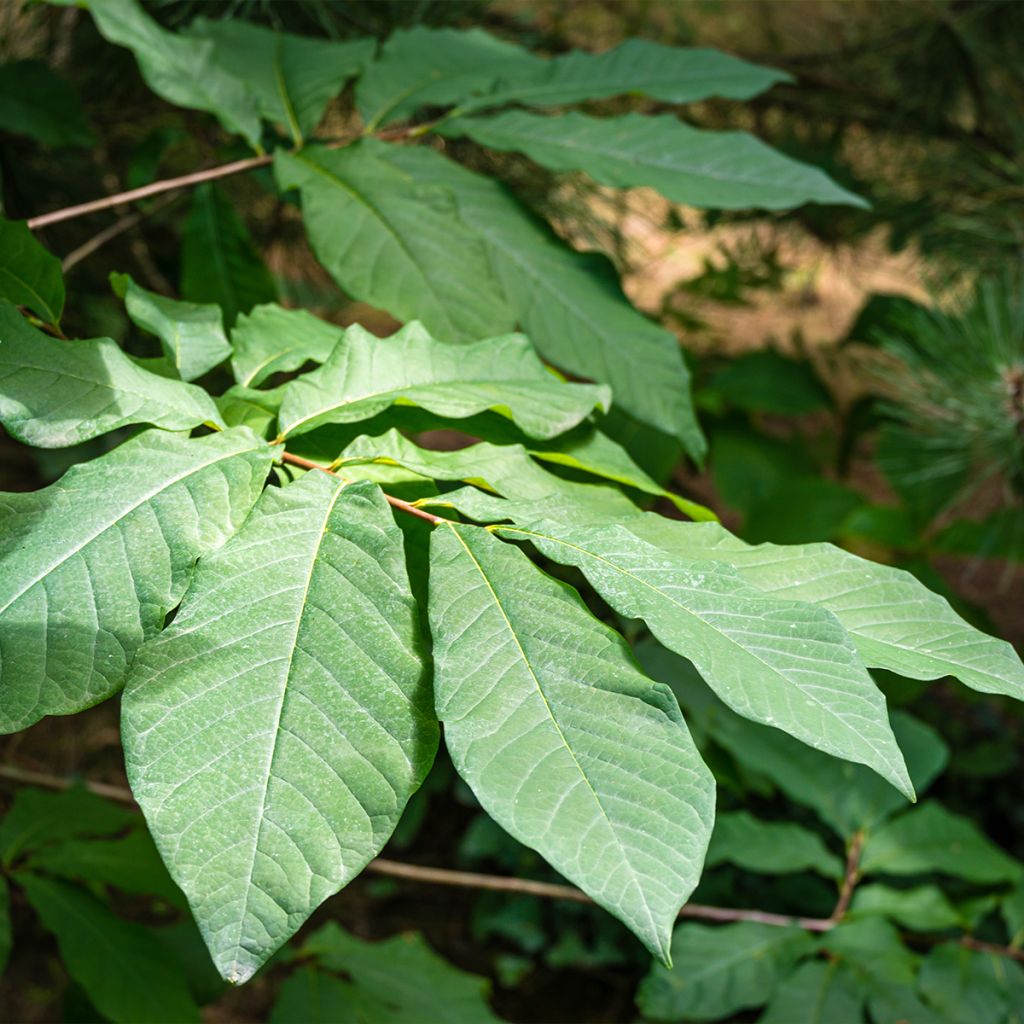

Pawpaw - Asimina triloba Allegheny
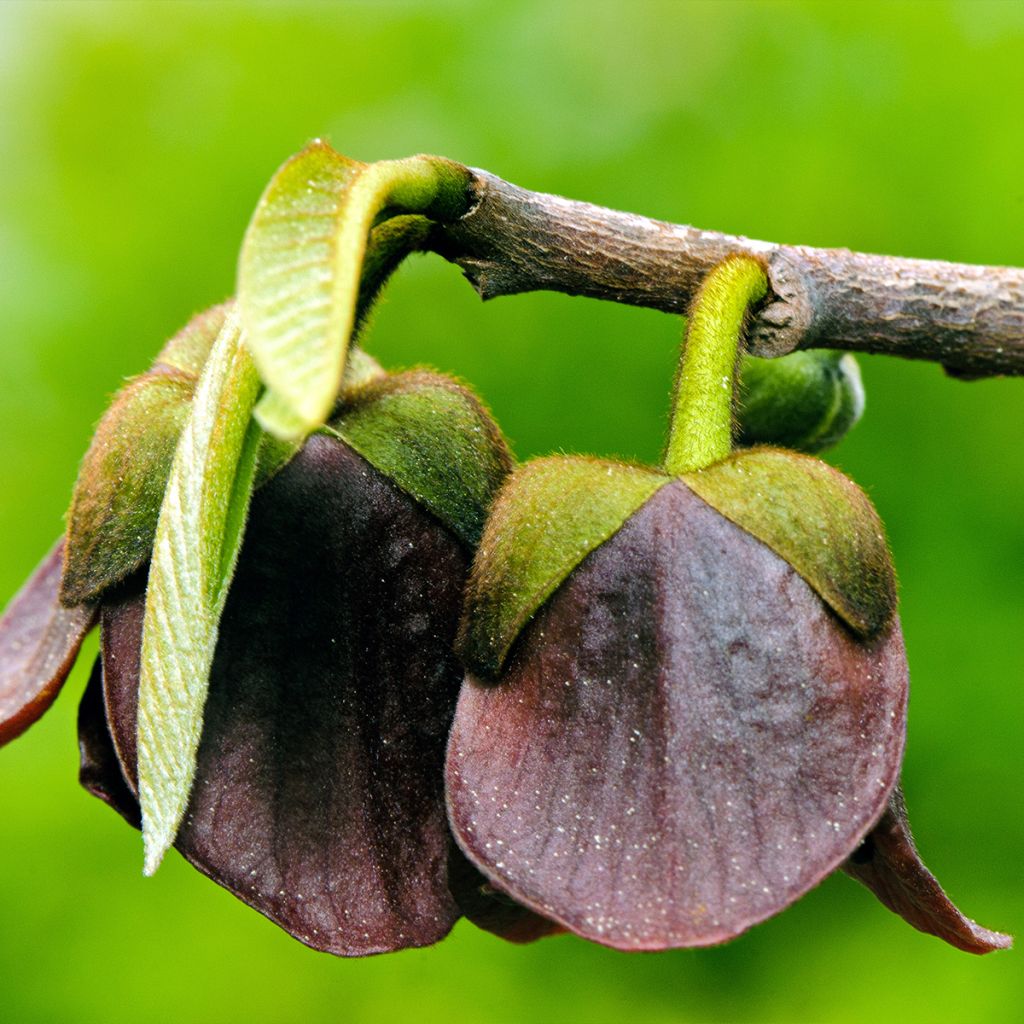

Pawpaw - Asimina triloba Allegheny
Asimina triloba Allegheny - Pawpaw
Asimina triloba Allegheny
Pawpaw, Paw Paw, Paw-Paw, Common Pawpaw, Indiana Banana, American Custard Apple
très bien plante assez grande, pouvant supporter les attaques de gastéropodes
Mireille, 17/04/2023
Why not try an alternative variety in stock?
View all →This plant carries a 6 months recovery warranty
More information
We guarantee the quality of our plants for a full growing cycle, and will replace at our expense any plant that fails to recover under normal climatic and planting conditions.
Oversize package: home delivery by special carrier from €6.90 per order..
Express home delivery from €8.90.
Description
The Asimina triloba 'Allegheny' is a selection by Neal Peterson, an American plant geneticist who fell in love with this fruit species in the 70s and has dedicated his life to it since then. This early variety produces medium-sized fruits (150 grams and more) in significant quantities, starting from September.
The pawpaw tree is the only representative of the tropical Annonaceae family in temperate climates. Nine species are present in the United States, with Asimina triloba being the hardiest of all (up to the far south of Canada). It is a small tree that grows slowly, well-branched and bushy, reaching a height of 4 to 5 m (13 to 16ft) over time and a width of 2.50 to 3 m (8 to 10ft). It generally has an ovoid or even pyramidal habit, on a relatively short trunk, sometimes even branched from the ground. The large, narrow, single leaves, about 25 cm (10in) long, lazily hang towards the ground, giving it a characteristic appearance reminiscent of tropical areas. In autumn, they turn a bright yellow color, just slightly paler than that of the Ginkgo, the maidenhair tree. Therefore, the pawpaw tree is worth planting for its beautiful autumn coloration. Its 6-petaled flowers form bell-shaped blooms of a beautiful burgundy color in March-April, although their modest size (3-4 cm (1-2in)) and their often isolated distribution on the branches offer limited appeal. Its nickname, the northern mango, comes from the evocative shape of the fruits, whose skin remains green when ripe, while the sweet flesh resembles the taste of mango and banana (which is why it is sometimes also marketed as Indian banana or poor man's banana...). The fruits contain about ten large black seeds, which are harvested when the flesh becomes tender. Therefore, picking should be done without force, and the fruits can even be picked up from the ground. Then, they should be consumed quickly (they only keep for a few days at room temperature) or stored in the fridge (up to 2 weeks).
With its delicious taste, the pawpaw tree also has high nutritional value (it is particularly rich in vitamins A and C). Americans consume it raw or prepared as juice, sorbet, cake...
The Asimina triloba 'Allegheny' will find its place in a small urban garden, possibly near a wall that will shelter it from strong winds. Its slow growth should not make us forget to leave enough space for its future development. Also, consider planting it in pairs to allow cross-pollination and obtain fruits. Although it is primarily a fruit-bearing species, its ornamental value encourages its association with other decorative plants. It can thus be integrated into a garden with an exotic appearance, associated with hardy palms such as the Trachycarpus fortunei, the Fatsia japonica, or yuccas, to create a scene rich in shapes and colors of foliage suggesting the exuberance of the Tropics. Or, more traditionally, rely on the contrasts of autumnal colors by planting it near slow-growing shrubs (to avoid suffocation) that turn red, such as the Euonymus alatus 'Compactus' or the Nandina domestica 'Fire Power'.
Report an error about the product description
Asimina triloba Allegheny - Pawpaw in pictures






Plant habit
Fruit
Flowering
Foliage
Botanical data
Asimina
triloba
Allegheny
Annonaceae
Pawpaw, Paw Paw, Paw-Paw, Common Pawpaw, Indiana Banana, American Custard Apple
Cultivar or hybrid
Other Asimina trees
Planting and care
The plant takes its time to establish itself, so patience is required! It takes about ten years to obtain a specimen about 2.50 m (8ft) in height and at least three years before the first fruiting.
In the face of this slow growth, ensuring the best planting conditions is necessary.
This species can withstand temperatures as low as -25°C (-13°F) and needs cold weather to flower, followed by warm weather in the summer, but without excess. Indeed, it cannot tolerate arid soils or drying winds, as it needs moisture in the summer.
Provide it with neutral to acidic soil that is well-drained (no stagnant water) and deep enough to allow for the good development of the root system.
Light shading and mulching the soil with organic matter (leaves, compost, etc.) above the roots will help it withstand dry summer periods.
Preferably plant in autumn to benefit from rainfall or in spring by watering regularly during the summer. Choose young plants, as taproot development is incompatible with a long cultivation container stay. However, avoid plants that are too small (pots), as transplanting into the open ground can be delicate.
Dig a planting hole at least 60 cm (24in) deep and enrich it with compost and planting soil. Carefully position the root ball in the hole to avoid damaging the roots. Fill the hole with a mixture of soil and compost and water generously to compact the soil.
Planting period
Intended location
Care
-
, onOrder confirmed
Reply from on Promesse de fleurs
Unusual and exotic fruit trees
Haven't found what you were looking for?
Hardiness is the lowest winter temperature a plant can endure without suffering serious damage or even dying. However, hardiness is affected by location (a sheltered area, such as a patio), protection (winter cover) and soil type (hardiness is improved by well-drained soil).

Photo Sharing Terms & Conditions
In order to encourage gardeners to interact and share their experiences, Promesse de fleurs offers various media enabling content to be uploaded onto its Site - in particular via the ‘Photo sharing’ module.
The User agrees to refrain from:
- Posting any content that is illegal, prejudicial, insulting, racist, inciteful to hatred, revisionist, contrary to public decency, that infringes on privacy or on the privacy rights of third parties, in particular the publicity rights of persons and goods, intellectual property rights, or the right to privacy.
- Submitting content on behalf of a third party;
- Impersonate the identity of a third party and/or publish any personal information about a third party;
In general, the User undertakes to refrain from any unethical behaviour.
All Content (in particular text, comments, files, images, photos, videos, creative works, etc.), which may be subject to property or intellectual property rights, image or other private rights, shall remain the property of the User, subject to the limited rights granted by the terms of the licence granted by Promesse de fleurs as stated below. Users are at liberty to publish or not to publish such Content on the Site, notably via the ‘Photo Sharing’ facility, and accept that this Content shall be made public and freely accessible, notably on the Internet.
Users further acknowledge, undertake to have ,and guarantee that they hold all necessary rights and permissions to publish such material on the Site, in particular with regard to the legislation in force pertaining to any privacy, property, intellectual property, image, or contractual rights, or rights of any other nature. By publishing such Content on the Site, Users acknowledge accepting full liability as publishers of the Content within the meaning of the law, and grant Promesse de fleurs, free of charge, an inclusive, worldwide licence for the said Content for the entire duration of its publication, including all reproduction, representation, up/downloading, displaying, performing, transmission, and storage rights.
Users also grant permission for their name to be linked to the Content and accept that this link may not always be made available.
By engaging in posting material, Users consent to their Content becoming automatically accessible on the Internet, in particular on other sites and/or blogs and/or web pages of the Promesse de fleurs site, including in particular social pages and the Promesse de fleurs catalogue.
Users may secure the removal of entrusted content free of charge by issuing a simple request via our contact form.
The flowering period indicated on our website applies to countries and regions located in USDA zone 8 (France, the United Kingdom, Ireland, the Netherlands, etc.)
It will vary according to where you live:
- In zones 9 to 10 (Italy, Spain, Greece, etc.), flowering will occur about 2 to 4 weeks earlier.
- In zones 6 to 7 (Germany, Poland, Slovenia, and lower mountainous regions), flowering will be delayed by 2 to 3 weeks.
- In zone 5 (Central Europe, Scandinavia), blooming will be delayed by 3 to 5 weeks.
In temperate climates, pruning of spring-flowering shrubs (forsythia, spireas, etc.) should be done just after flowering.
Pruning of summer-flowering shrubs (Indian Lilac, Perovskia, etc.) can be done in winter or spring.
In cold regions as well as with frost-sensitive plants, avoid pruning too early when severe frosts may still occur.
The planting period indicated on our website applies to countries and regions located in USDA zone 8 (France, United Kingdom, Ireland, Netherlands).
It will vary according to where you live:
- In Mediterranean zones (Marseille, Madrid, Milan, etc.), autumn and winter are the best planting periods.
- In continental zones (Strasbourg, Munich, Vienna, etc.), delay planting by 2 to 3 weeks in spring and bring it forward by 2 to 4 weeks in autumn.
- In mountainous regions (the Alps, Pyrenees, Carpathians, etc.), it is best to plant in late spring (May-June) or late summer (August-September).
The harvesting period indicated on our website applies to countries and regions in USDA zone 8 (France, England, Ireland, the Netherlands).
In colder areas (Scandinavia, Poland, Austria...) fruit and vegetable harvests are likely to be delayed by 3-4 weeks.
In warmer areas (Italy, Spain, Greece, etc.), harvesting will probably take place earlier, depending on weather conditions.
The sowing periods indicated on our website apply to countries and regions within USDA Zone 8 (France, UK, Ireland, Netherlands).
In colder areas (Scandinavia, Poland, Austria...), delay any outdoor sowing by 3-4 weeks, or sow under glass.
In warmer climes (Italy, Spain, Greece, etc.), bring outdoor sowing forward by a few weeks.

































